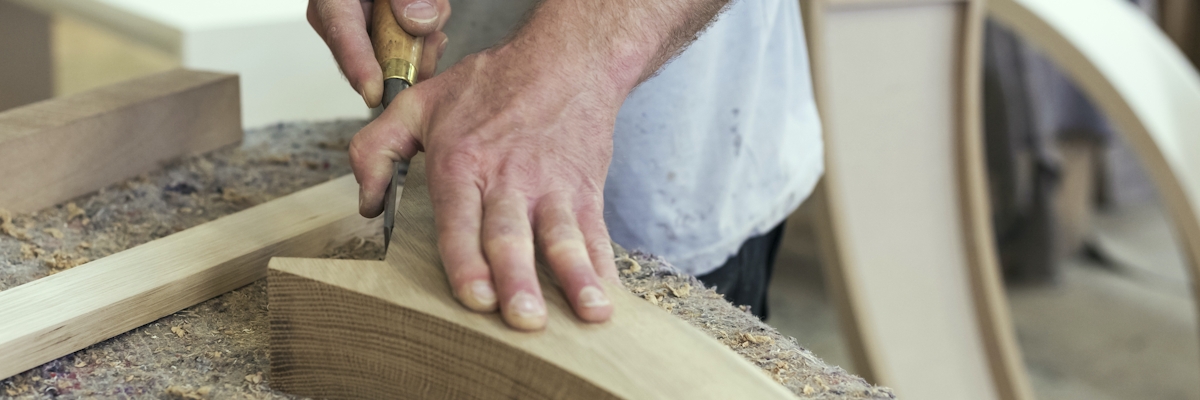
0 items added to basket
Image currently unavailable
Price on enquiry
Subtotal (0 items)
£0.00
Types of Sofa Arms & Sofa Legs

From the lawson arm to a platform base, discover your options
With all of its unknown elements and mysterious inner workings, a sofa can be a complex thing. Two of the less mysterious sofa elements, and often its most defining characteristics, are a sofa's arms and legs or feet.
But like everything else in sofa design, there is a lot of choice and a lot to know. Here, we offer up the basics to make your decision easier.
Types Of Sofa Arms
A sofa’s style is often determined by that of its arm, which is why many sofas are referred to by their arm type as in the case of the popular English Roll Arm sofa and the Lawson sofa. Two identical sofas can become remarkably different with the addition of distinctive arms.
Here, we identify the various arm options and which sofas they work best with.
English Roll Arm
The English roll arm is a low, rounded, tightly wrapped arm with pleating at the curve and with a facing panel trimmed with piping. It is a regular feature on country style sofas, including the English Roll Arm sofa to which it lends its name.
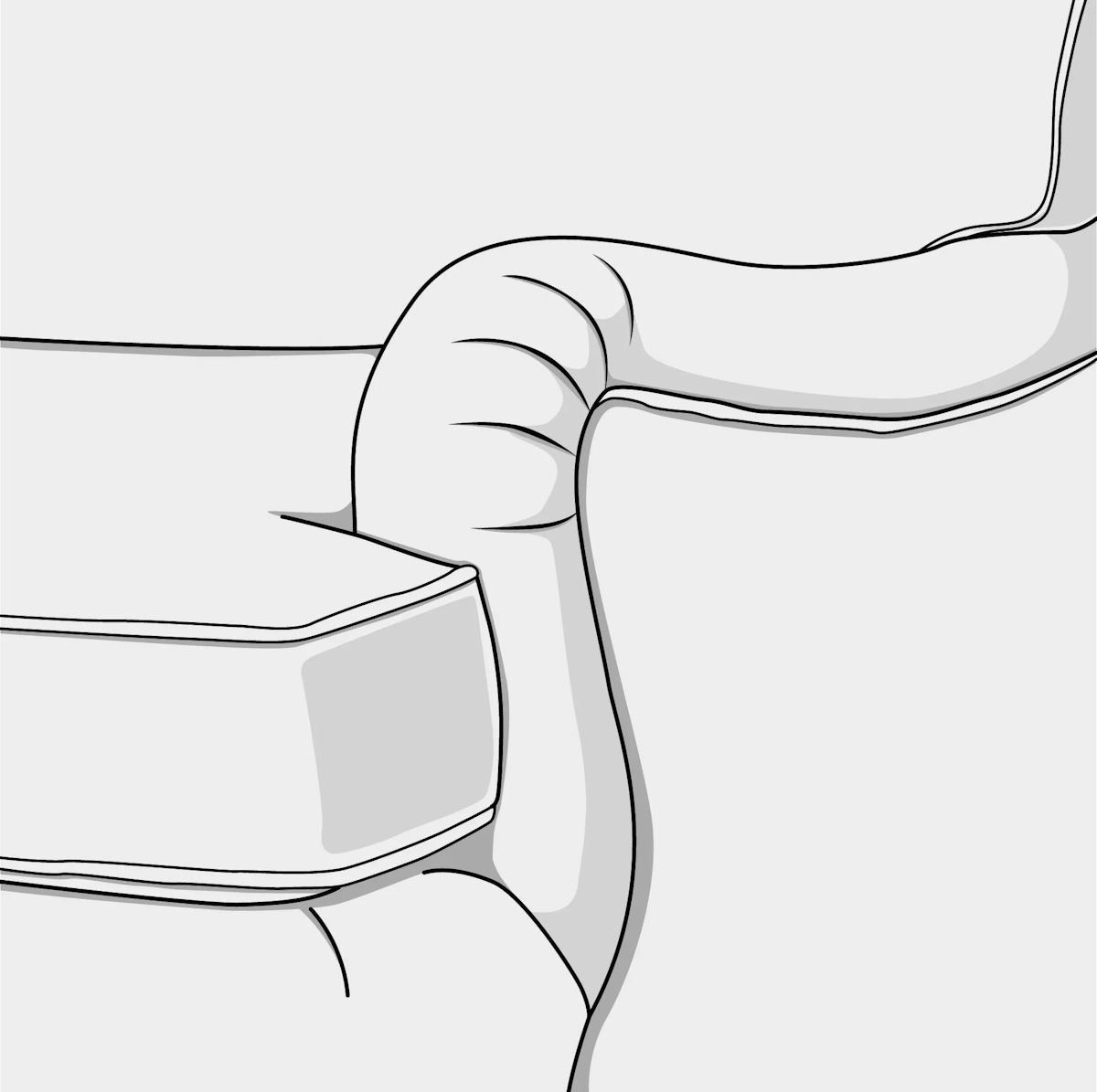
Key Arm
Elegant and refined, the Key arm is so-named for the squared Greek key motif which protrudes outwardly from the top of the arm. The recognisable outline of this arm can be defined by nailhead trim or piping for extra emphasis.
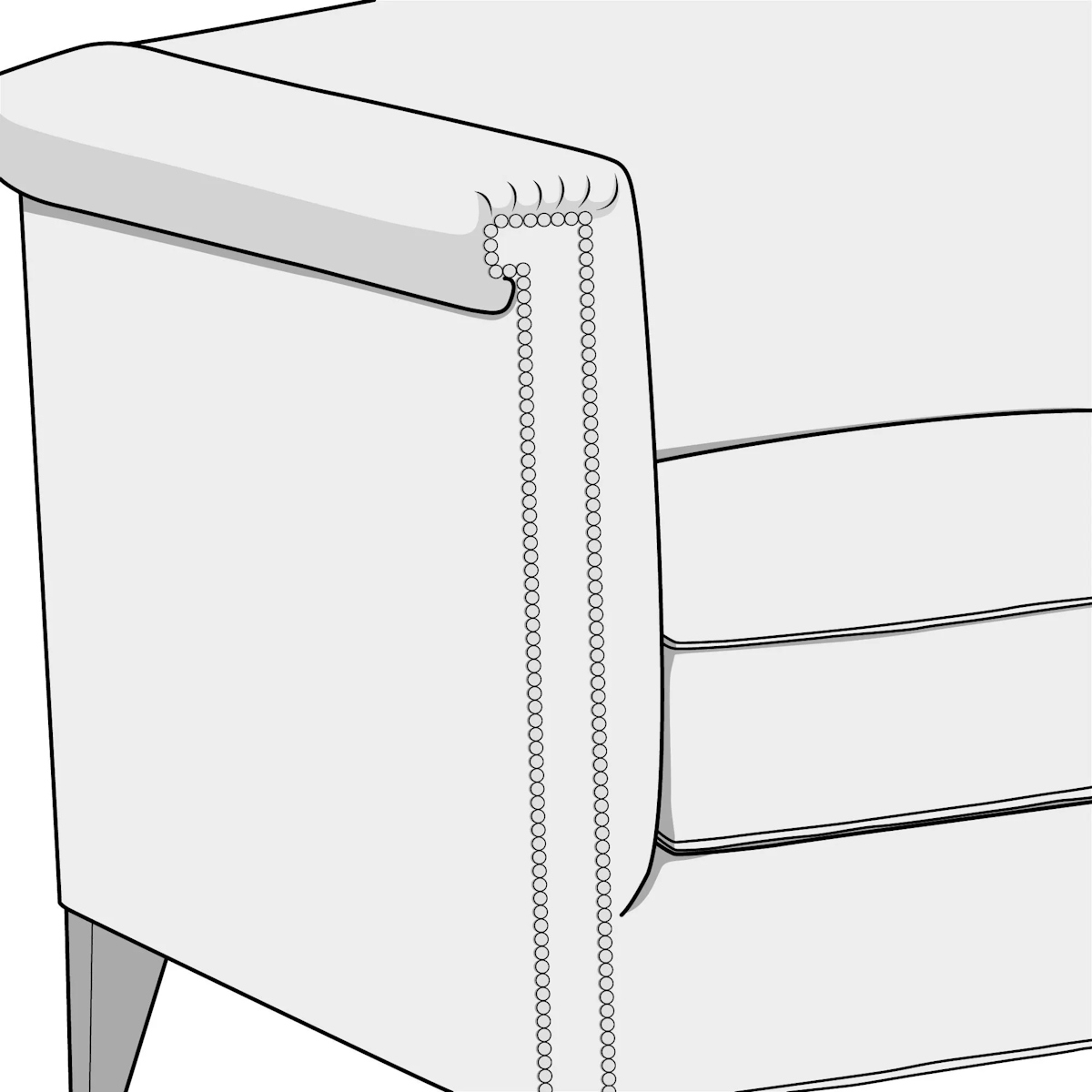
Lawson Arm
Another sofa arm style inextricably linked to the sofa with which it shares its name, the Lawson arm is a plush rolled arm with front pleating and a shaped, set back front panel. The panel can be plain or trimmed with piping or nailhead trim.
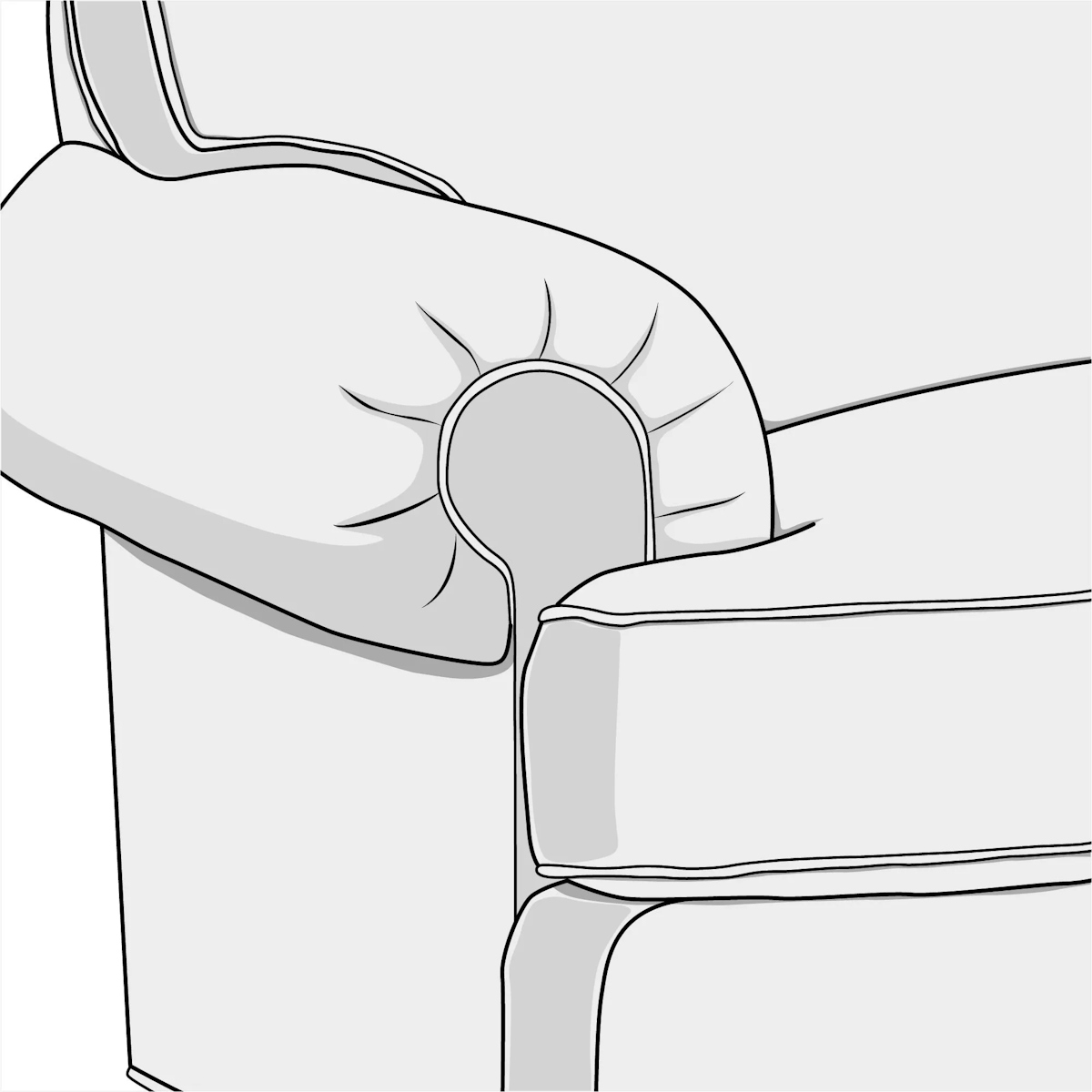
Pleated Arm
A pleated arm is an understated rolled arm with front pleating, much like a Lawson arm without the fixed front panel or a sock arm with pleating. Unlike these arms, however, a pleated arm usually doesn’t have a distinguished outline.

Shelter Arm
Subtly flared outward and without embellishments, a shelter arm is a combination of the track and sock arm. The arm can have an elegant, narrower silhouette or a wider, comfier silhouette and can be piped or un-piped.

Sock Arm
The sock arm is similar in shape to the Lawson arm but without the pleating and with a fuller panel which covers the entirety of the front of the arm. The outline of the front panel is almost always trimmed with piping for a more refined aesthetic.
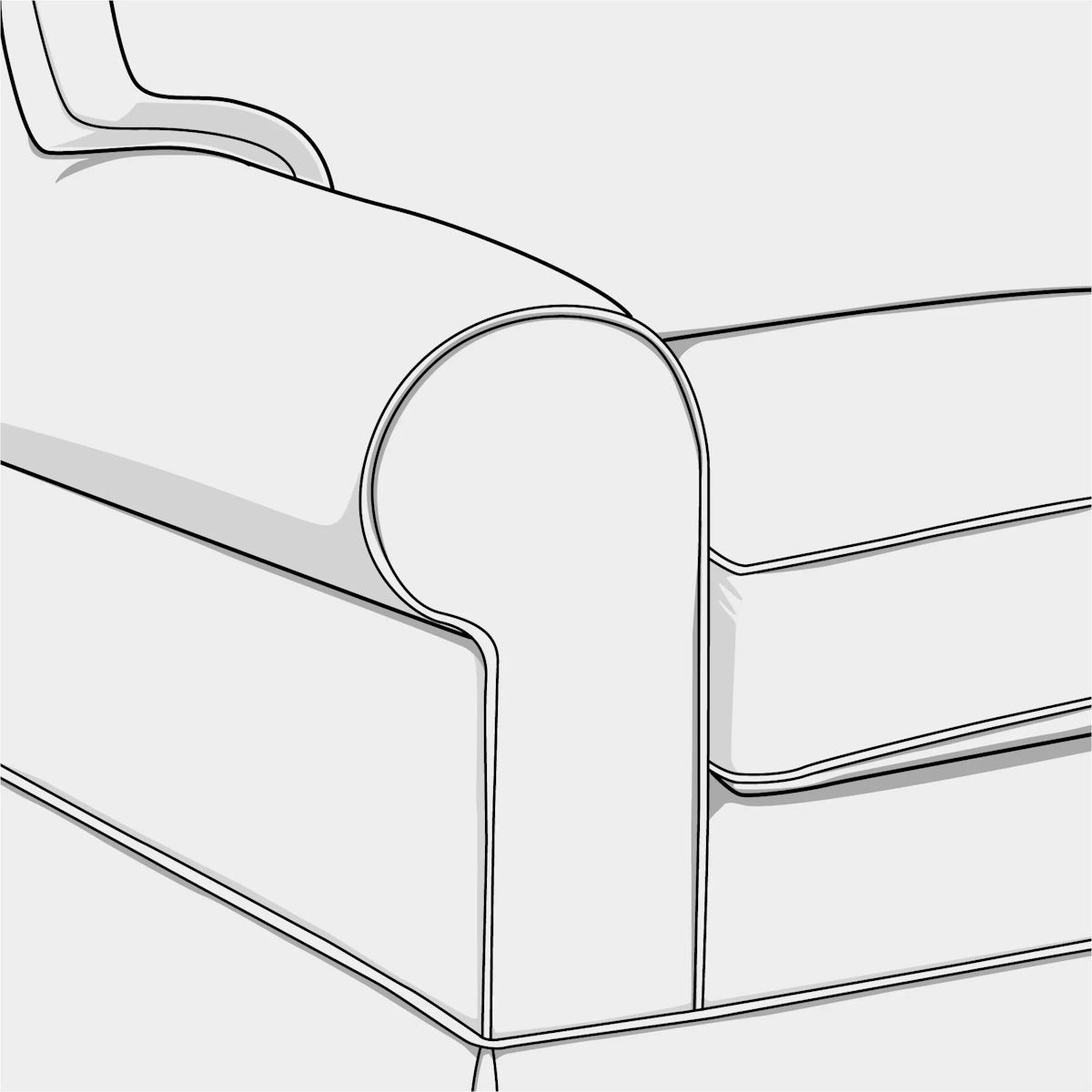
Track Arm
The track or square arm has flat parallel sides and a flat top. Its seams can be plain but, often, the parallel outlines are trimmed with piping. It’s a popular contemporary arm which focuses on clean lines and works well on modern sofas.
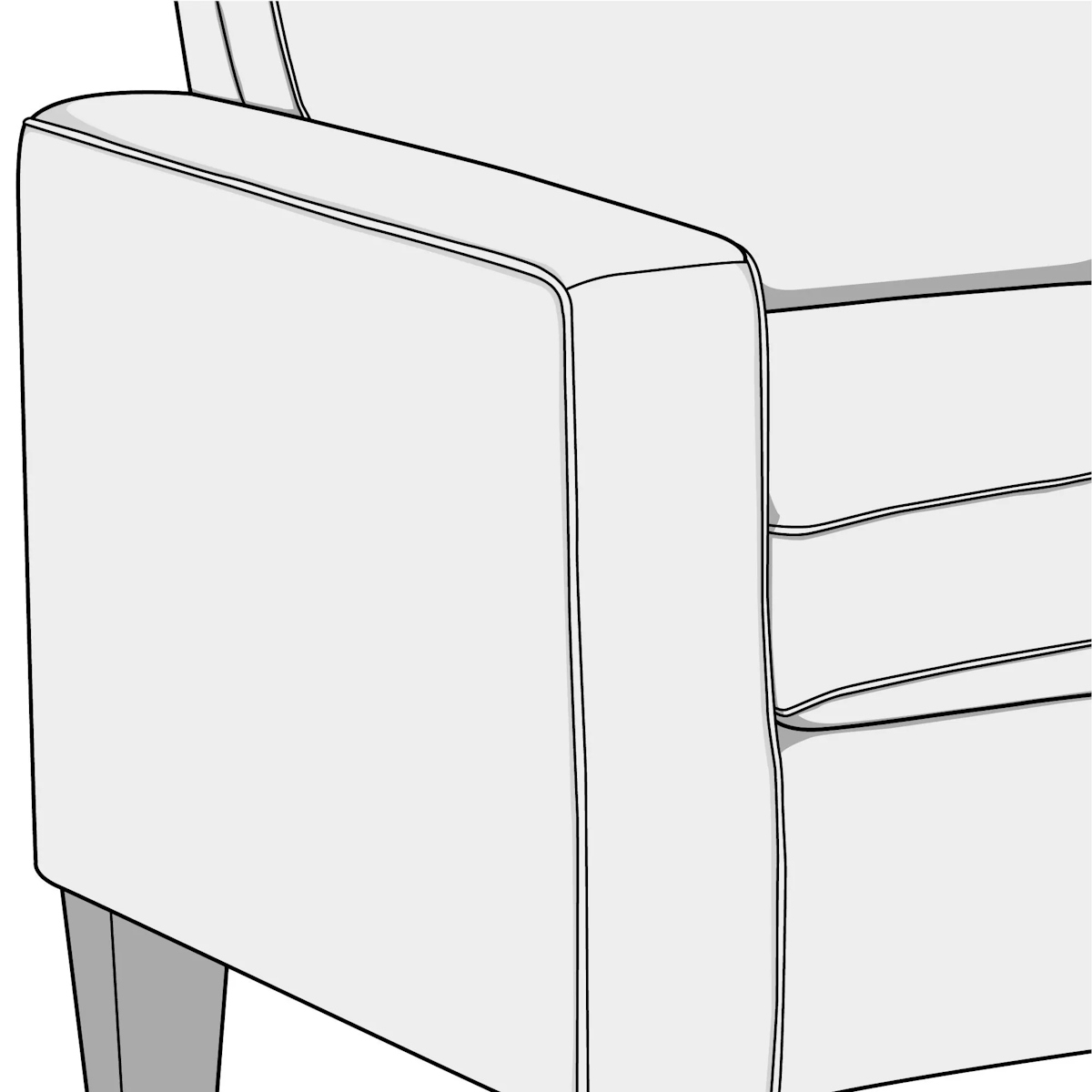
Types Of Sofa Feet & Legs
How often do you pay attention to a sofas legs or feet? Probably not very often. But whilst sofa leg and feet design might not immediately stir your soul, those floor-level choices have the ability to completely transform a piece.
Make the right choice and the sofa's design flows naturally; make the wrong choice and all you'll notice are those bad feet.
Arrow Foot
An arrow foot features a round foot which tapers towards the base and is separated from the leg of the furniture piece by a turned section. Popular in Hepplewhite and Sheraton designs.
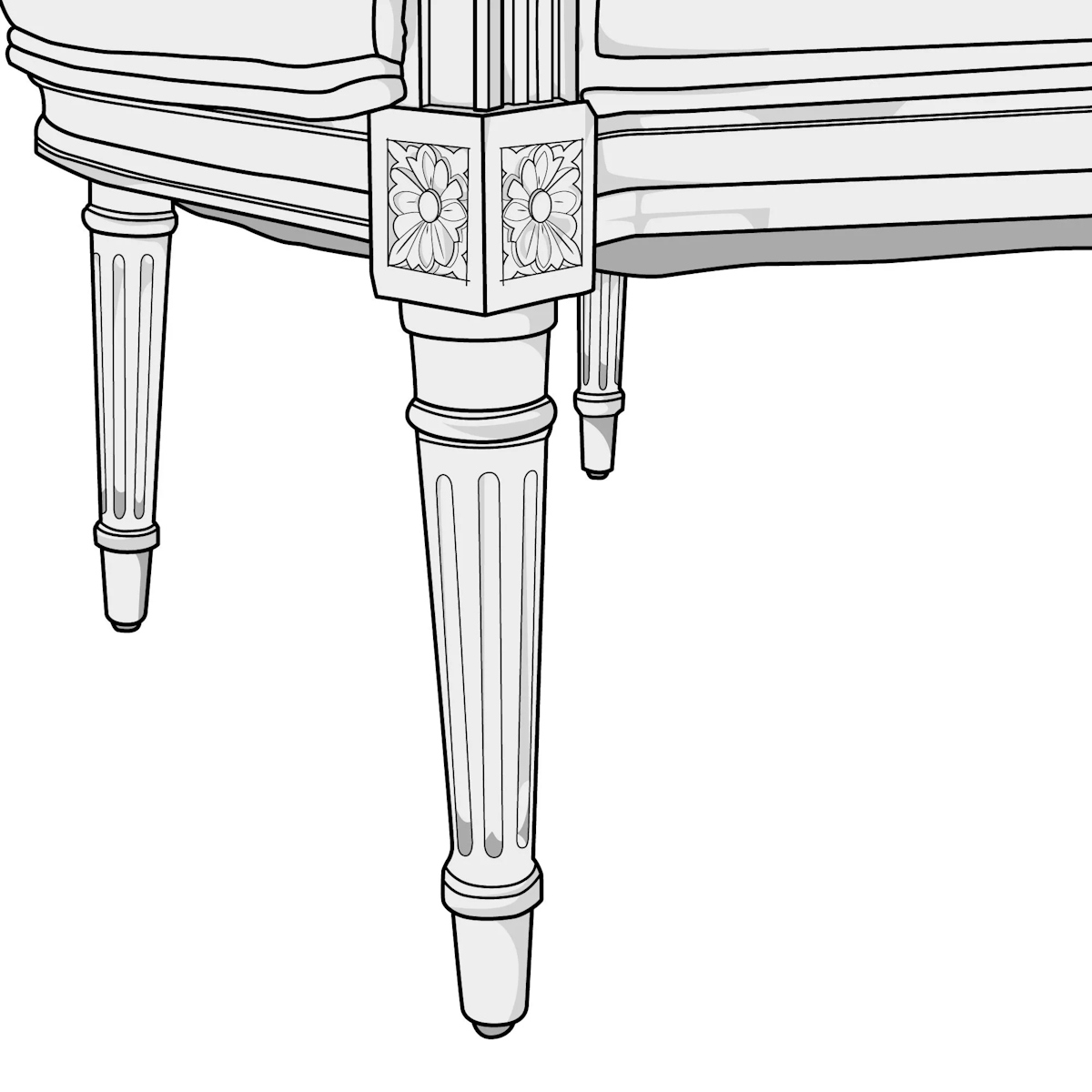
Block Foot
A foot style which lends itself particularly to modern sofas, the block foot is a straight, undecorated foot. Modern block feet are somewhat shallower and wider than traditional ones which were taller.
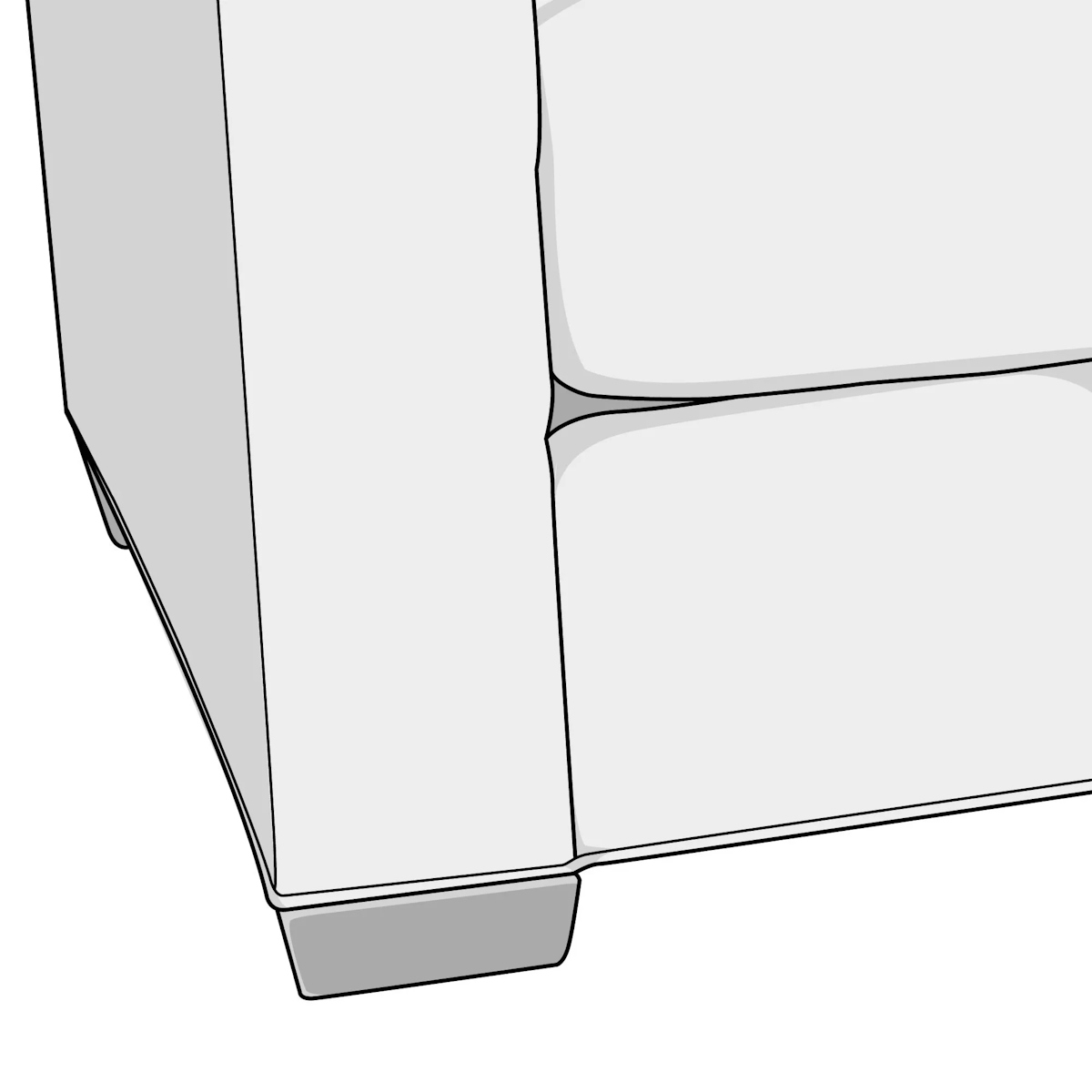
Bracket Foot
A mitred foot with an upward curve. Variations include the cabriole bracket (featuring a cabriole “knee”) and the ogee bracket (with a horizontal “S” curve addition).
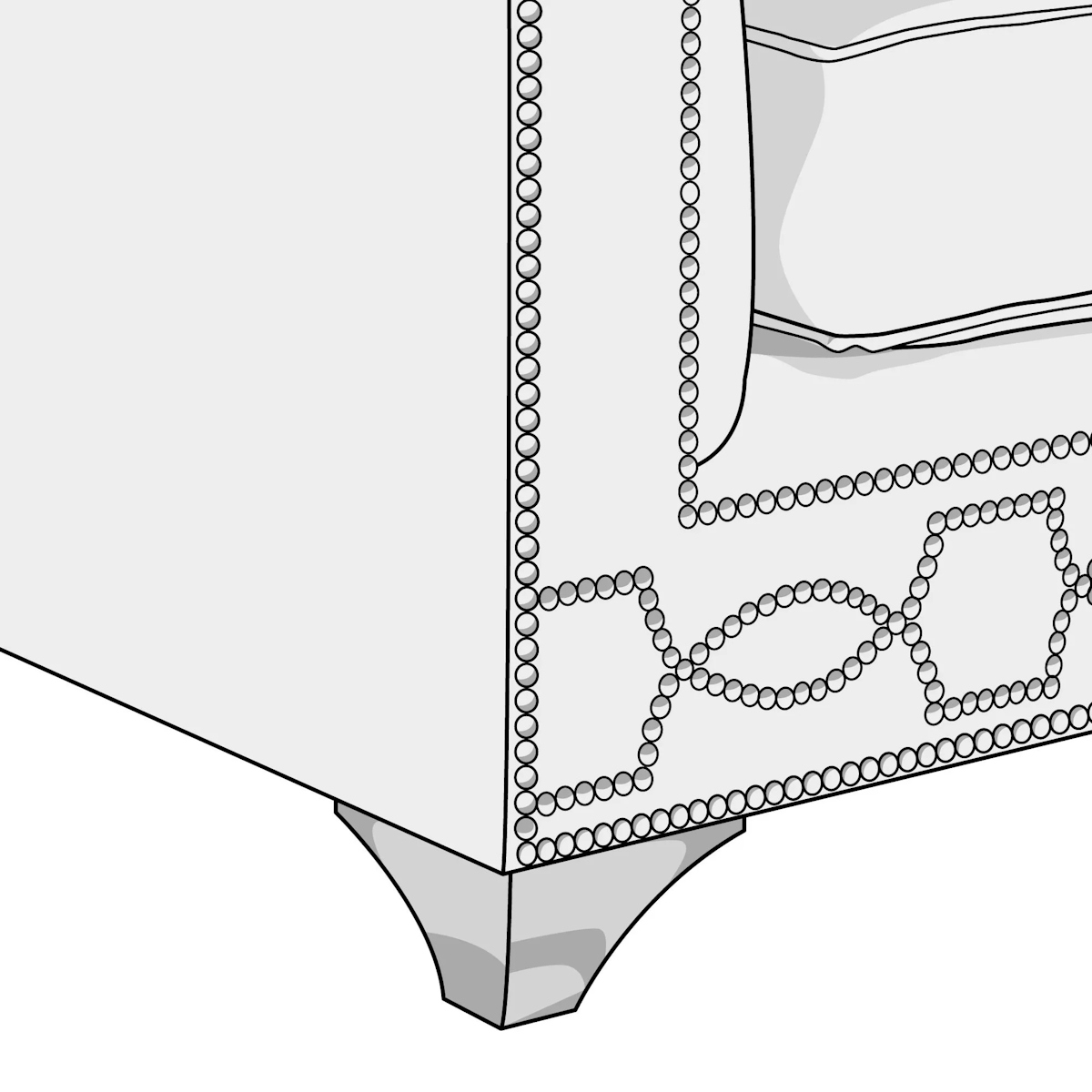
Bun Foot
A flattened sphere foot popular from the 17th century. The bun foot features in country-style furniture, its simplicity offsetting traditional, floral fabrics and overstuffed silhouettes.
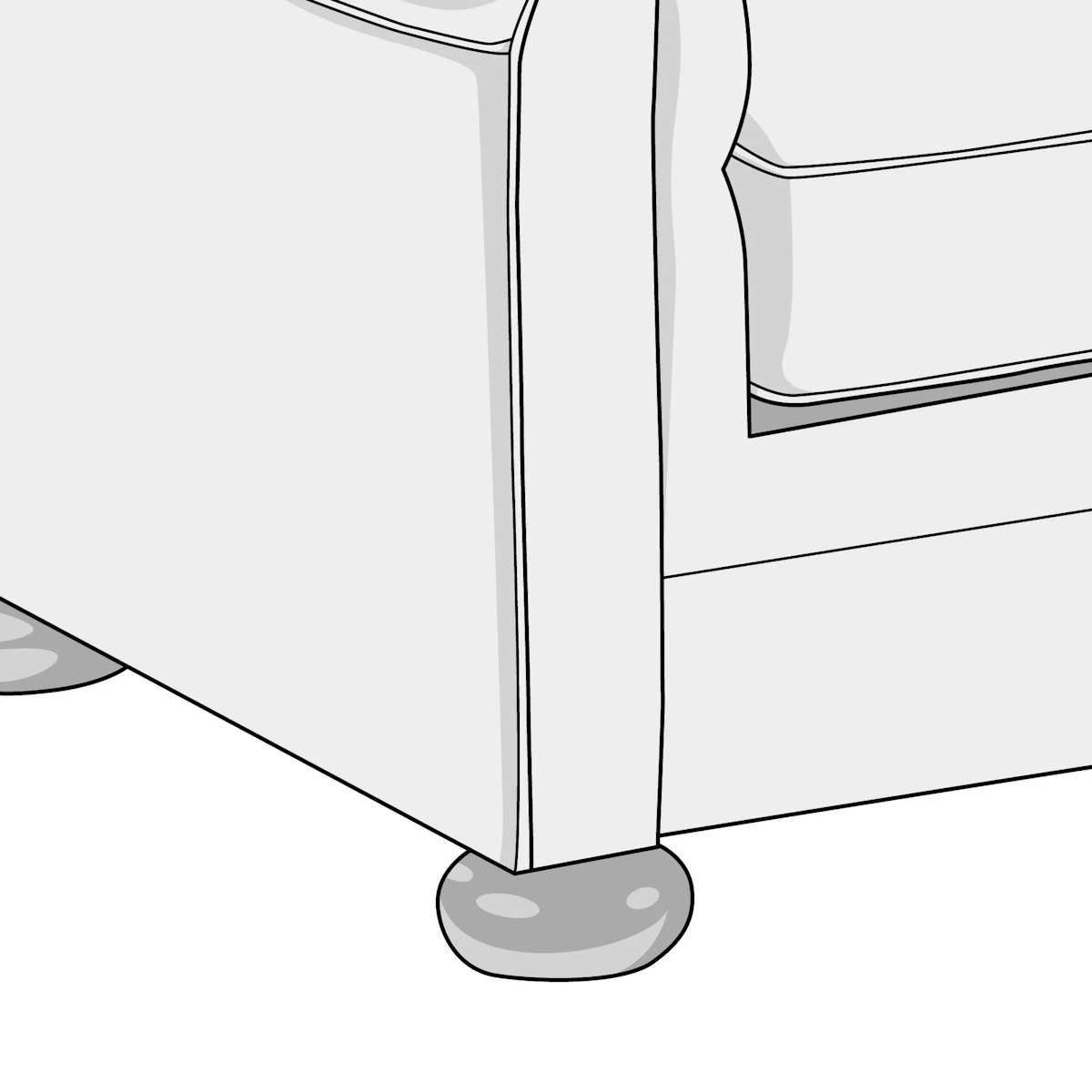
Cabriole Leg
A leg with a knee which curves outwards and a foot which curves inwards, creating a double curved “S”-shaped leg. Popular in Queen Anne furniture and notably feminine.
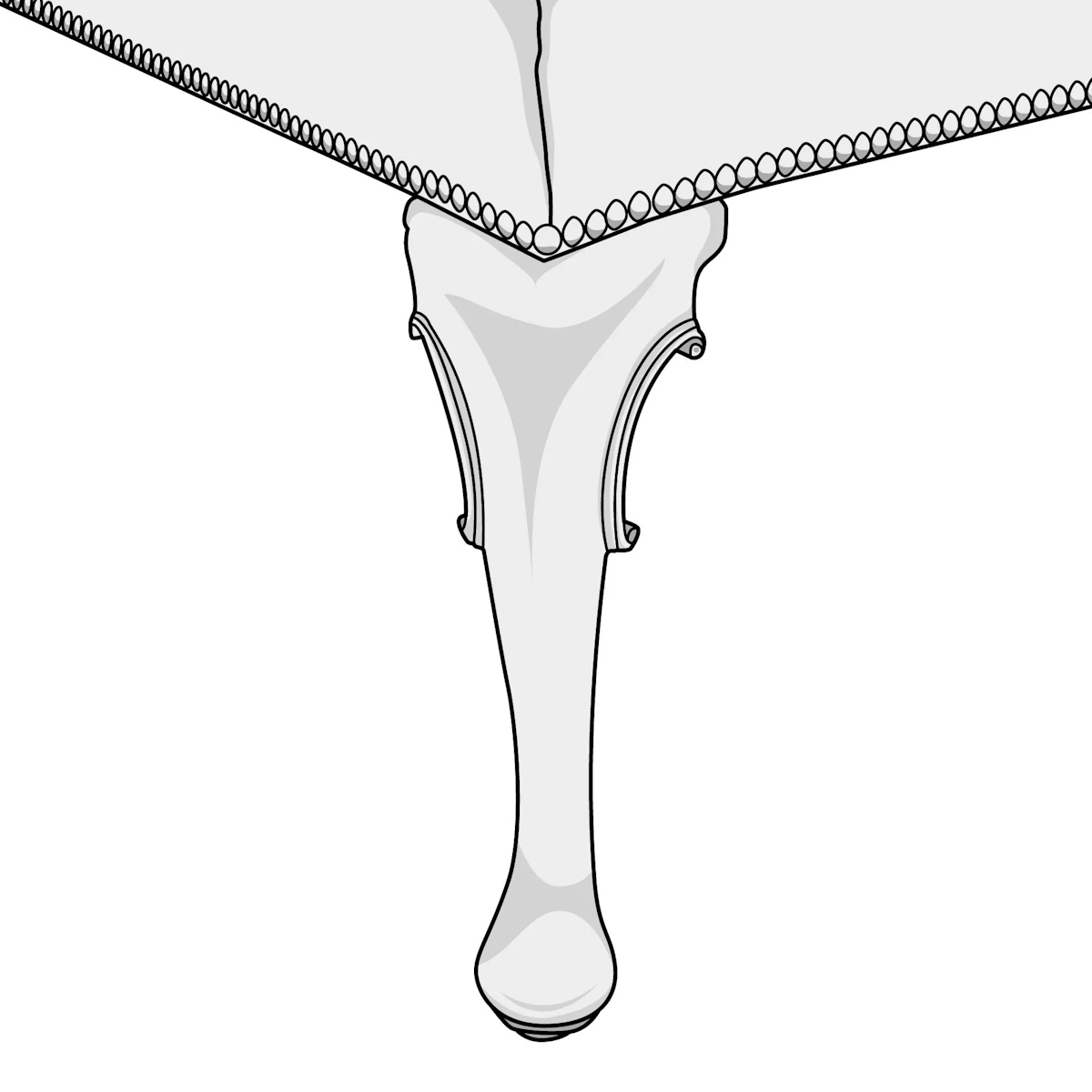
Claw and Ball Foot
A traditional foot style of 17th century origin which features a bird claw clutching a ball. Popular in Chippendale style furniture and continues to be used today for traditional design.
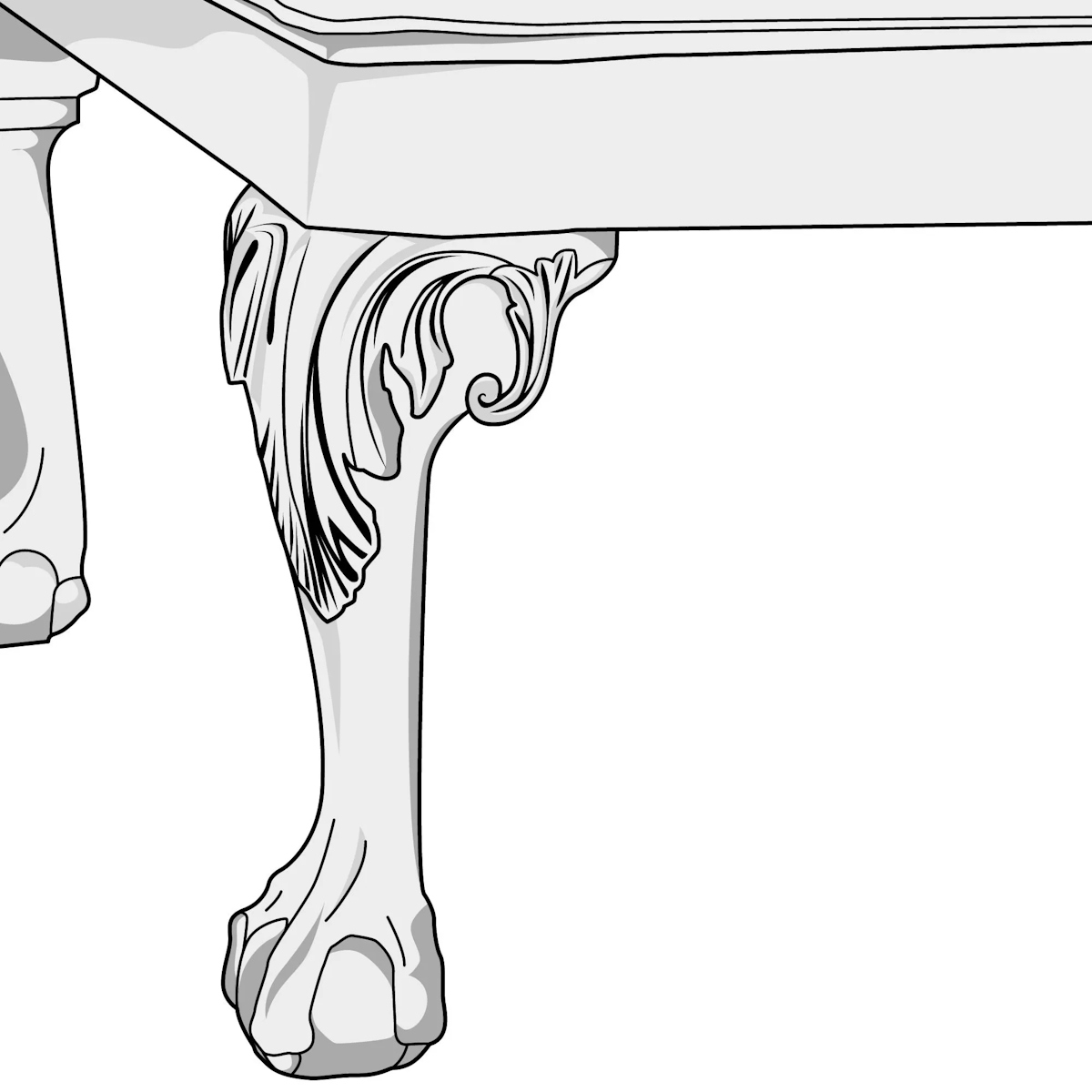
Club Foot
Also known as a pad foot, this style features an elegant outward-turned rounded end which bears the resemblance of a golf club. Often used together with a cabriole leg.
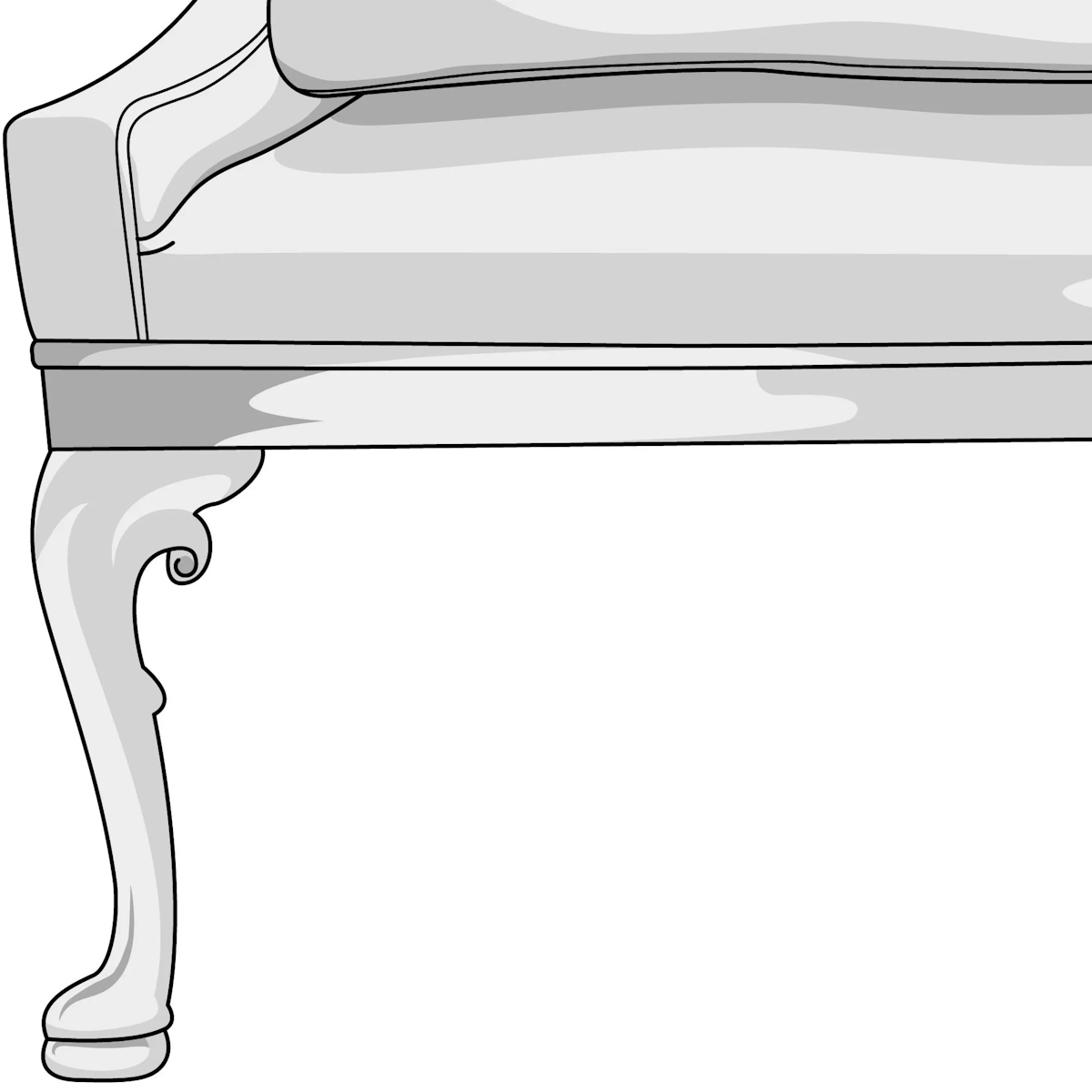
Paw Foot
A traditional furniture foot in the likeness of an animal’s paw. Elaborate and regal, the paw foot is found commonly on ancient Egyptian furniture and Neo-classical reinventions.
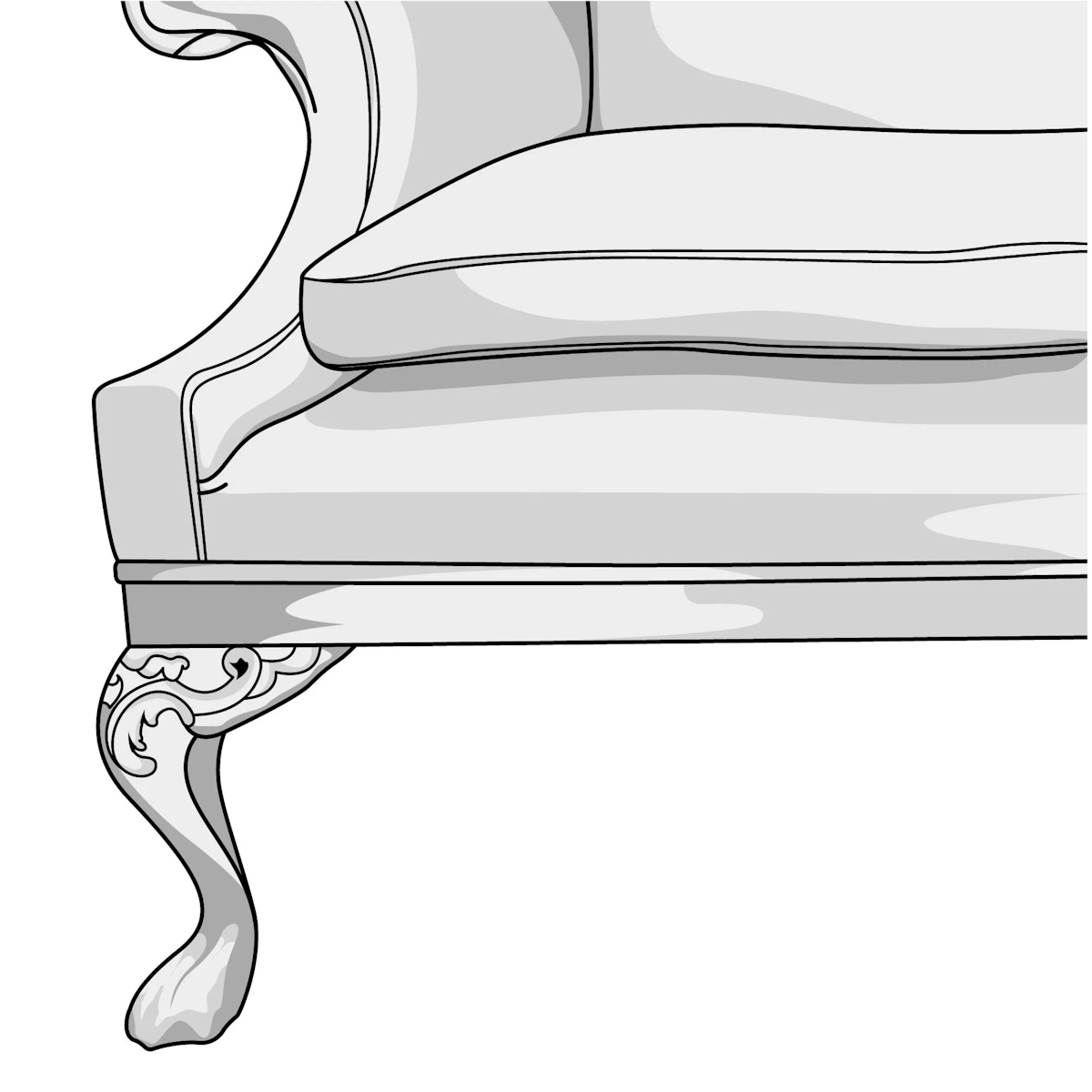
Platform Base
A platform is a plinth upon which a sofa is placed. They are usually left as plain wood or covered with a desirable accent material and recessed from the front of the sofa for distinction.
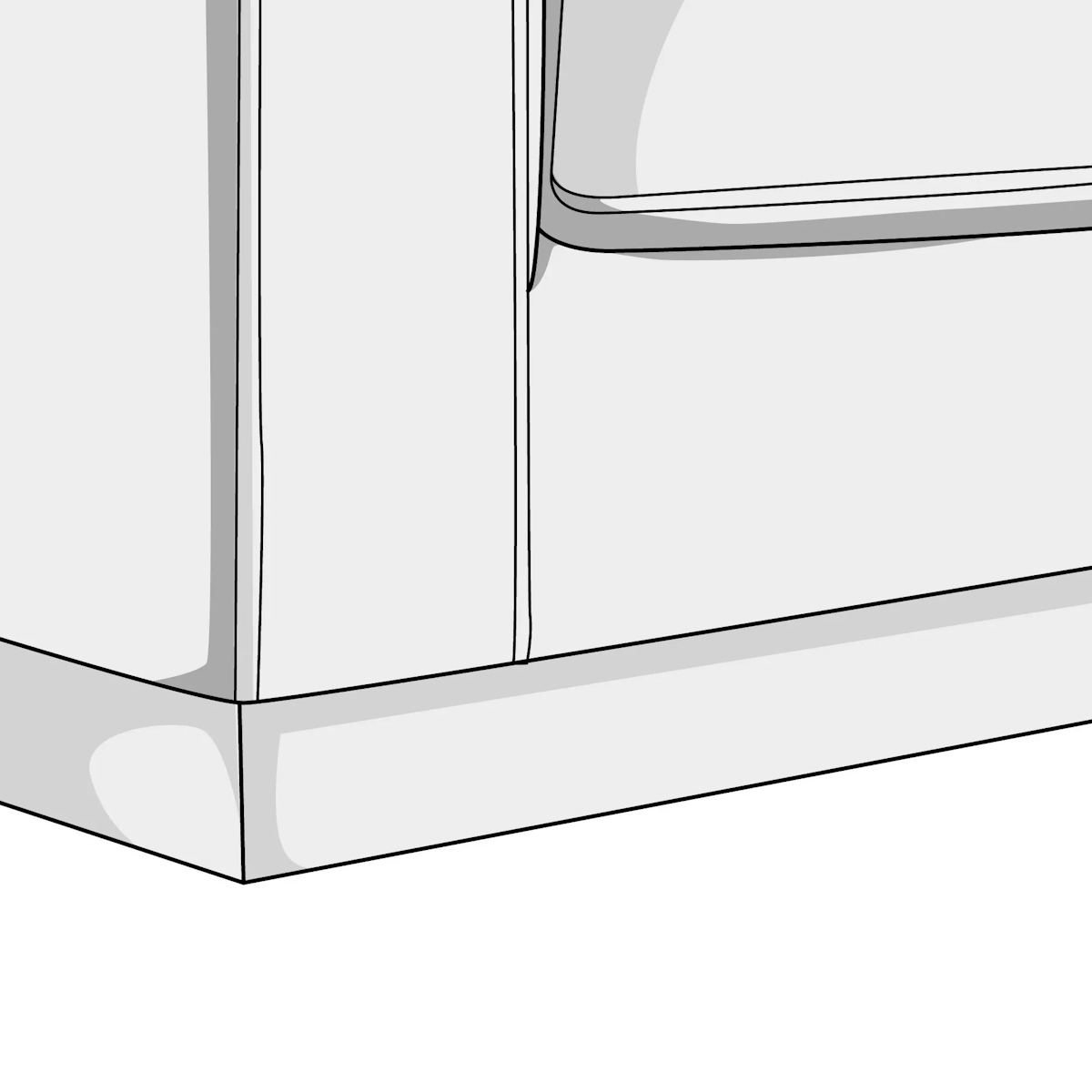
Saber Leg
A gently curved, splayed taper leg which was used for the classic Greek klismos chair and revived during the Neoclassical period. The ancient leg is used commonly for back sofa legs.
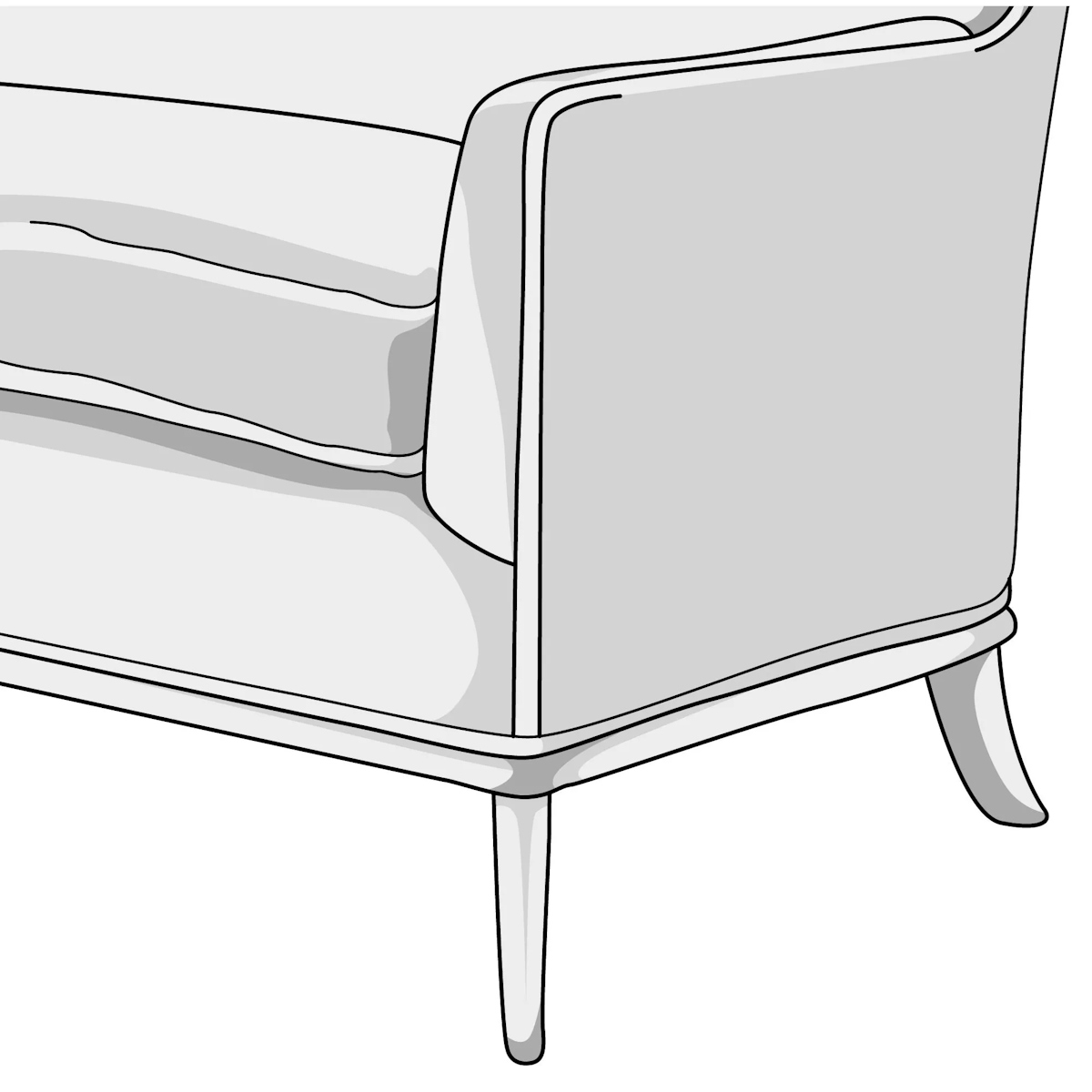
Skirt
A traditional sofa element which has been gaining traction of late, a skirted base features loose fabric panels which extend down past the seat bottom to cover the sofa's feet.
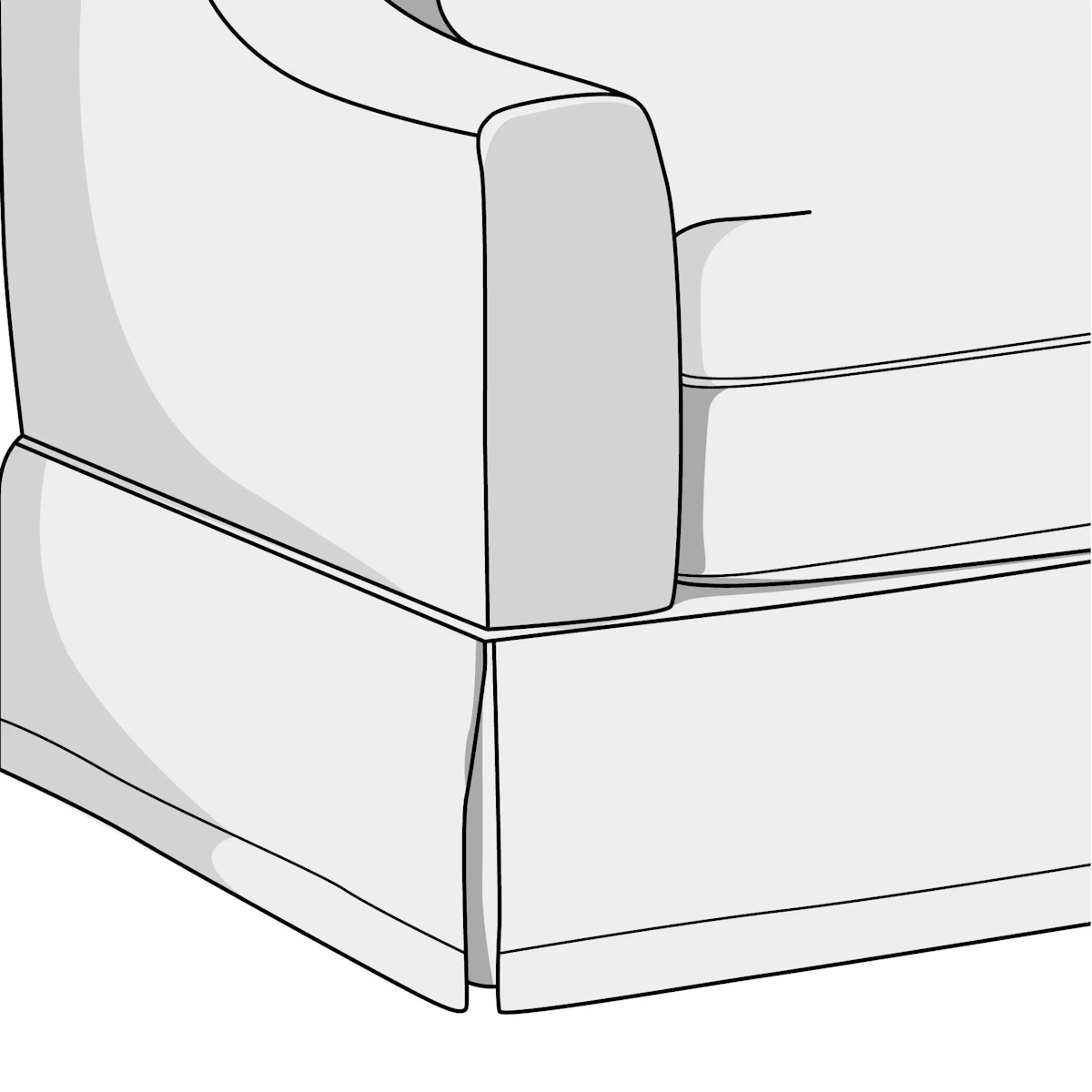
Sled Base
Two parallel rectangular frames with flat faces on which the sofa body is placed. Usually metal but sometimes wood and sometimes recessed slightly from the front of the sofa.
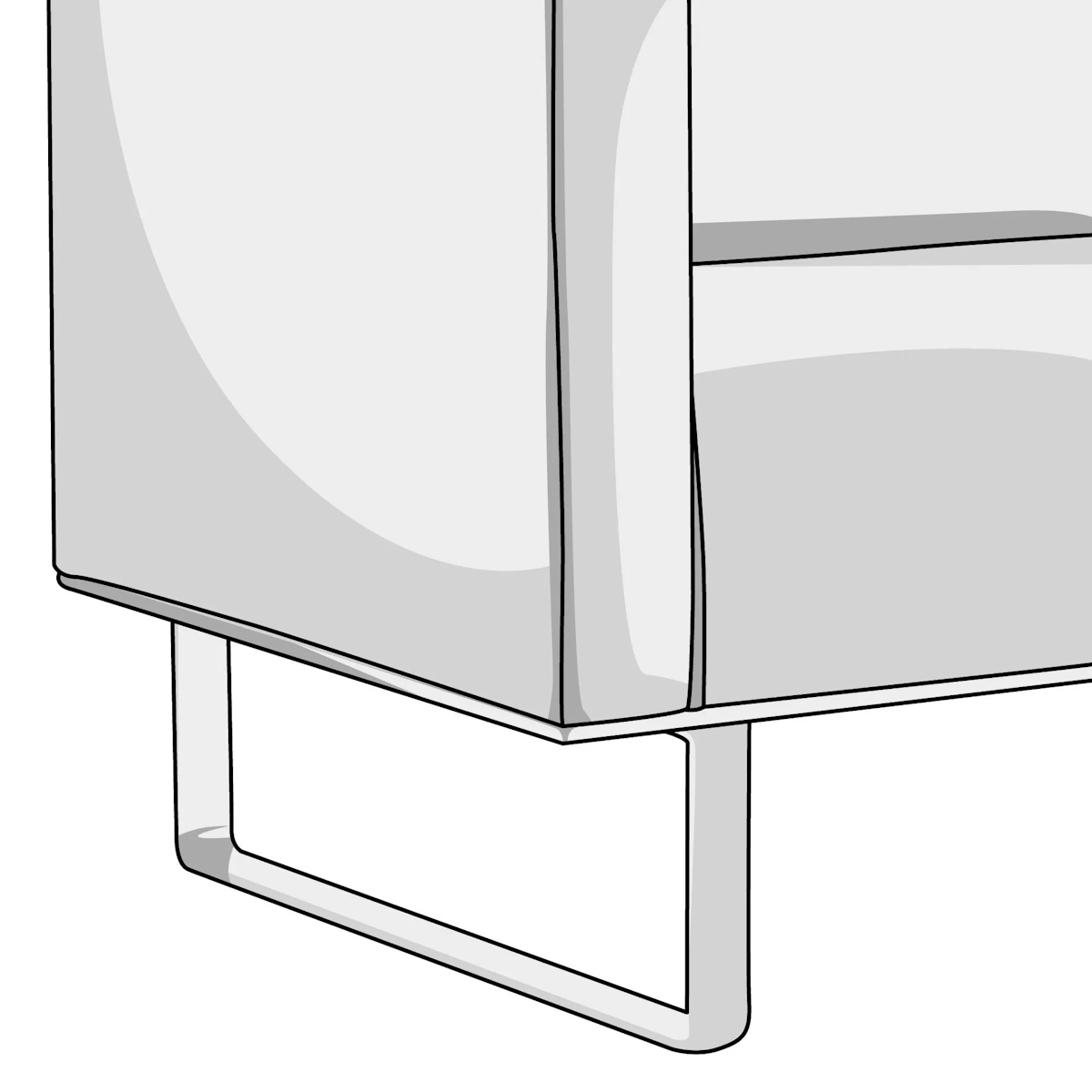
Spade Foot
A short foot with four squared and tapering sides. It was particularly popular for Hepplewhite furniture and can be used with or without a longer leg. It exudes a distinguishable elegance.
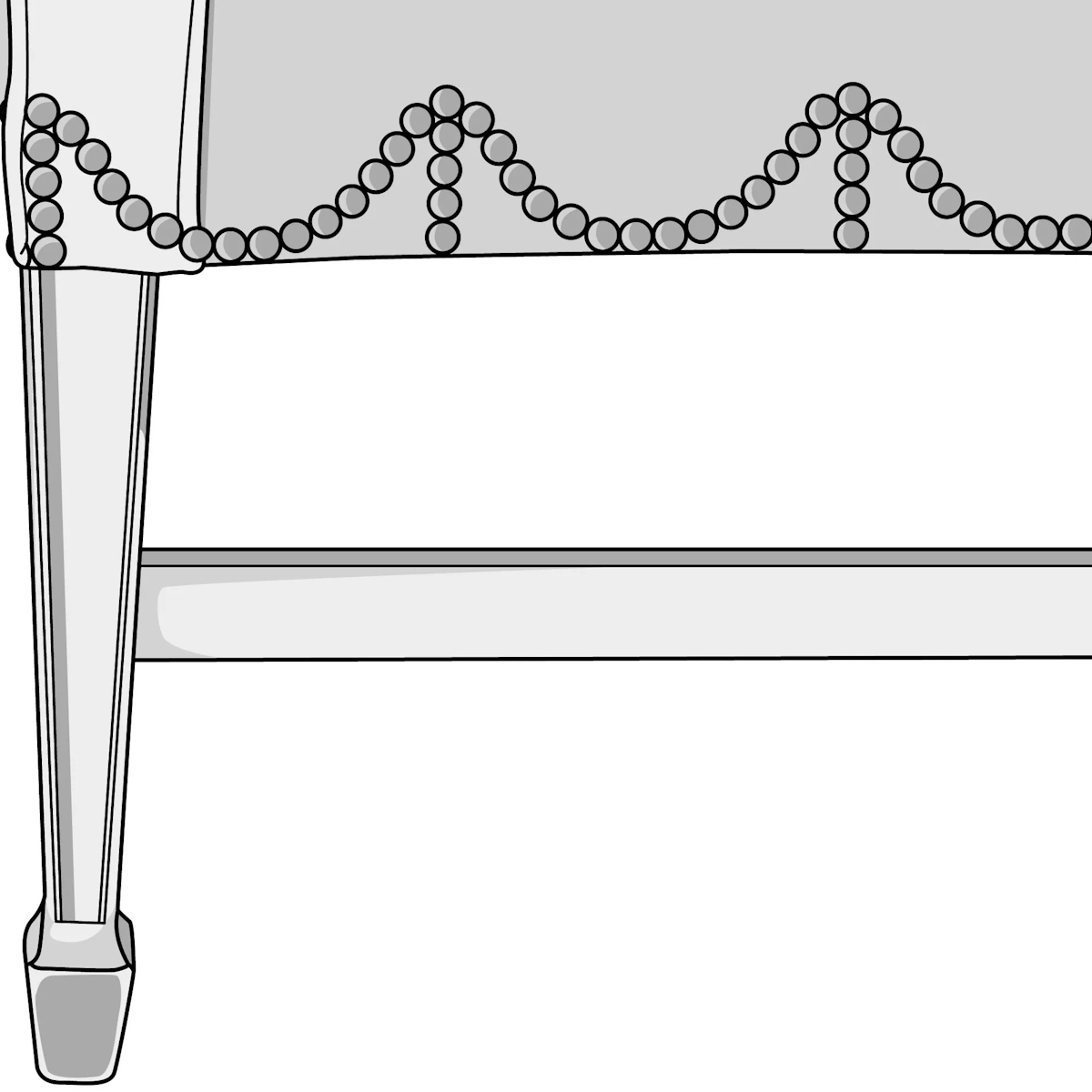
Splayed Leg
A round leg which is outwardly angled more than 90 degrees from the sofa base and usually recessed from the front slightly. Popular in Mid-century modern furniture.
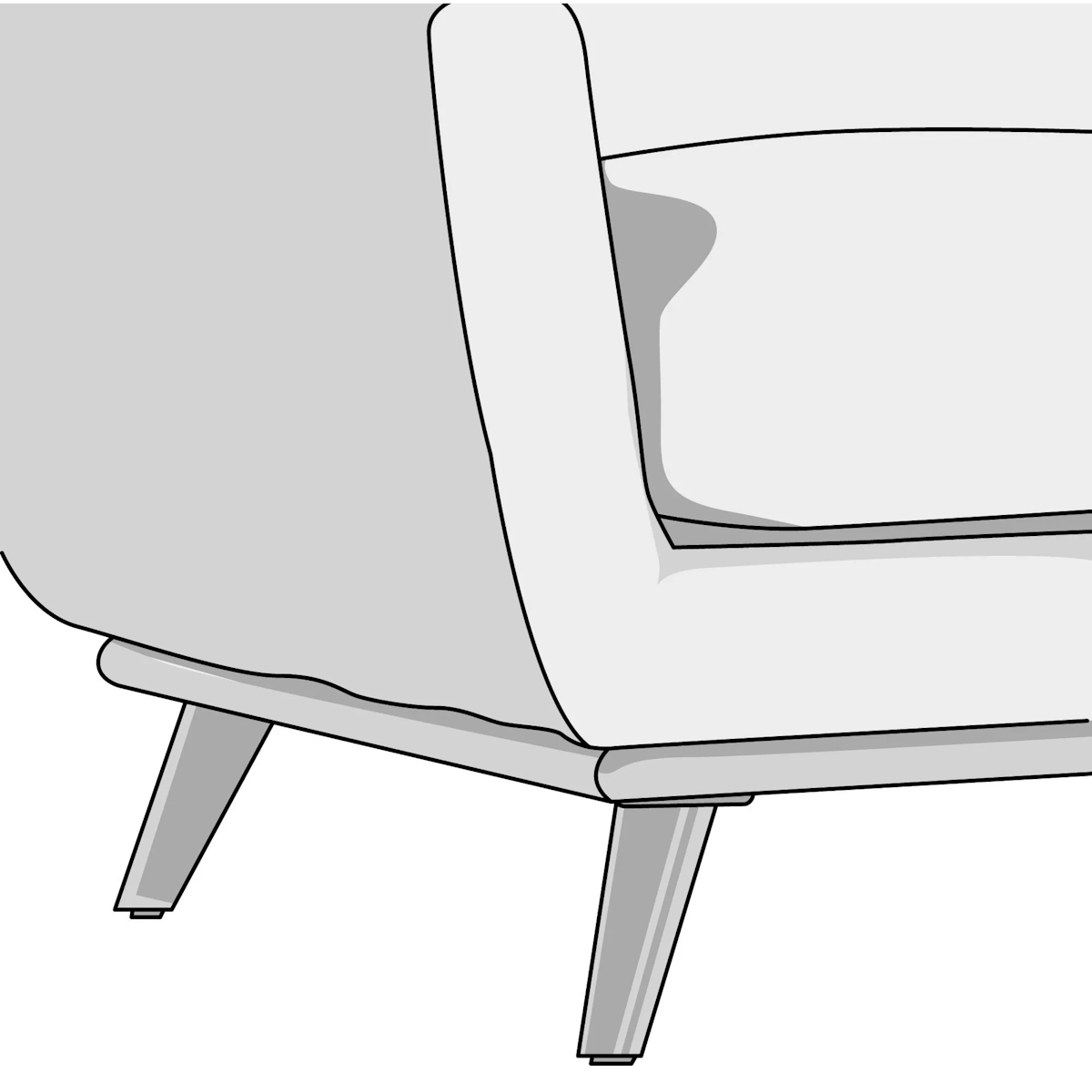
Square Leg
A close relative of the traditional Marlborough leg, the square leg is shorter, unembellished and straight on all sides—a somewhat narrower, taller version of the block foot.

Tapered Block Foot
Similar to the square leg, the tapered block foot is a square leg which is narrower at the bottom than it is at the top. It is popular for modern sofas thanks to its elegant simplicity.
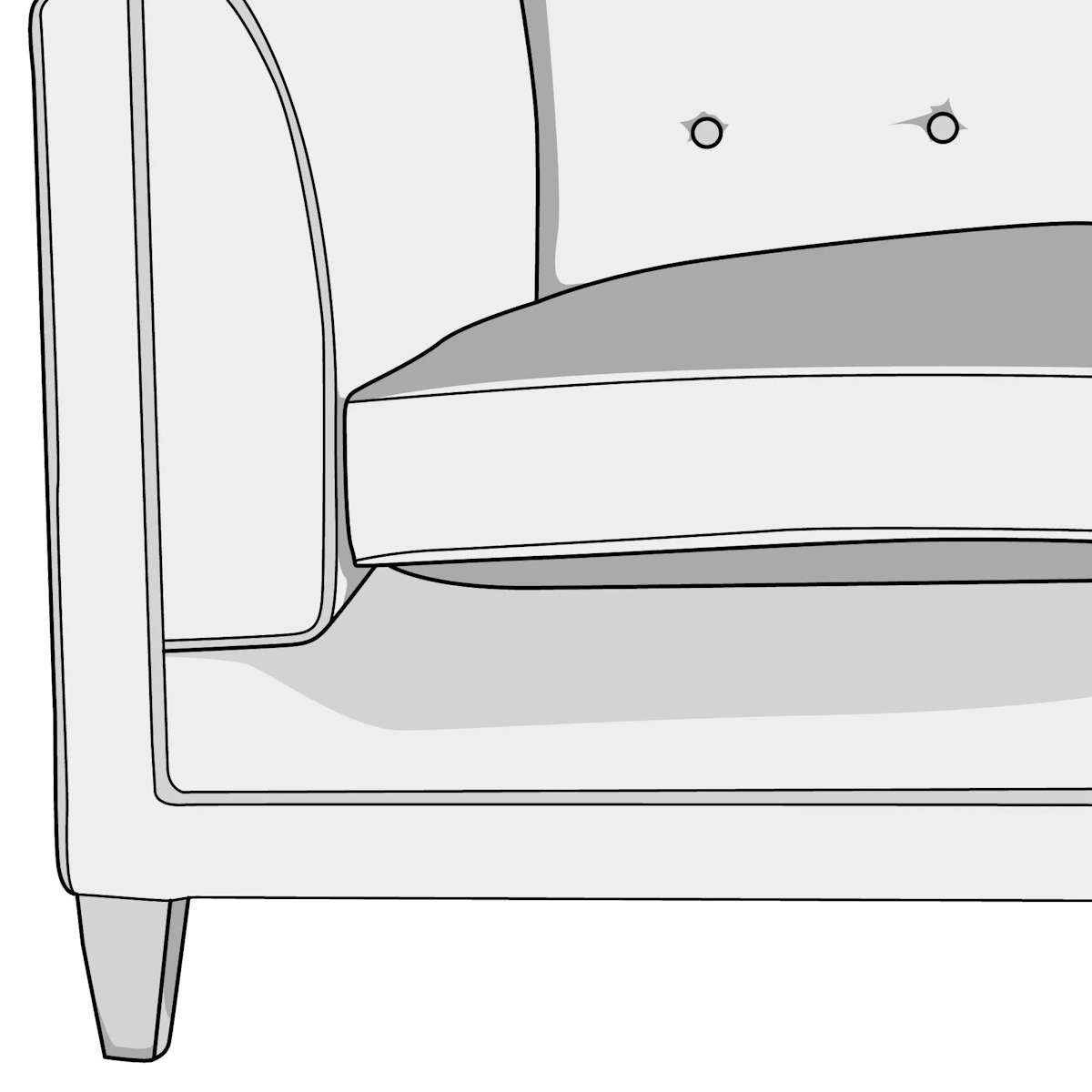
Turned Leg
The decorative rings of a turned leg is created by rotating a wooden dowel very quickly on a lathe and shaping using wood tools. Less undulations are more modern whilst many undulations are traditional.

Designing Your Ideal Sofa
The fun of sofa design in the modern-age is that the possibilities are endless and almost nothing is impossible.
Traditional arms, contemporary arms; traditional legs, contemporary legs; or something entirely different, sofas can be completely personalised simply by changing a couple of little design elements.
Have fun with your sofa design but always think of your sofa as a whole—that way nothing will feel out of place.
If you would like help designing your luxury sofa, our highly skilled team of designers here at LuxDeco are on hand to give their expert advice. Contact our team today at [email protected] or +44 (0)20 3322 8665.
Discover More
Continue on your sofa journey and learn more about the craftsmanship and care that goes into the production of our luxury sofas.
